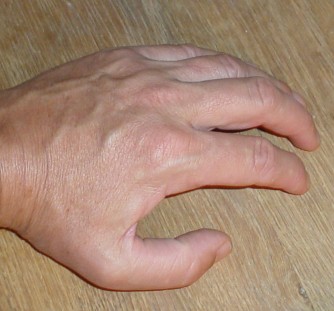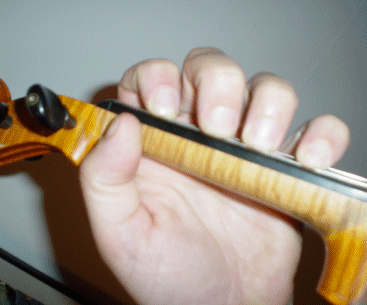A relaxed hand has curved fingers!
Put your left hand on a table. Notice how the thumb and the other fingers are a little bowed when you are relaxed. You should have the same position when you put the fingers on the fret board

When you hold the violin the left hand thumb is still curved. The arm is hanging in the fingers. And the violin is supported by your cheek and shoulders. Not so much by your left hand. In the start your fingertips may be a little sore from touching the string. After some time practicing, you will develop thicker skin on the left hand fingertips.
However in the start you should practice loose strings only.The left hand thumb receives no pressure. It is only there for guidance. It would in principle be possible to play without touching with the thumb, but then you'll certainly miss the guidance. The left hand fingers should be pressing downwards from above. The pressure should be just as light as pressing down the strings to the fingerboard. You can say that the arm is hanging in the fingers. Of course your cheek must be able to lift both the violin and the "hanging weight" of the left arm. In the beginning it is difficult not letting the thumb lift the violin. But the faster you learn that, the faster you will be able to play fast and precisely. I gather that by learning in the first couple of month a good finger position you may cut 5 years of practicing in getting a good violinist. (In other words if you don't get the concept of relaxing with your fingers and let the weight of the fingers do the job you may waste several years before you become a good violinist)
